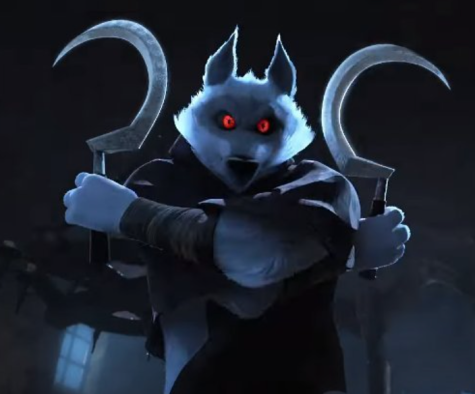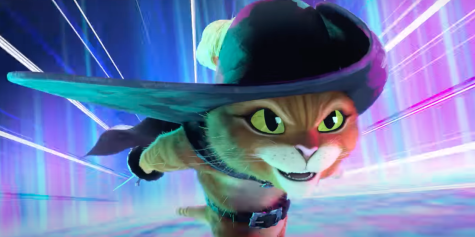Puss in Boots: The Last Wish: A Purr-fect Film
How Puss in Boots: The Last Wish garnered huge praise despite its underrated release
Contrary to the multitude of fairy-tale allusions that director Joel Crawford incorporates in his latest film Puss in Boots: The Last Wish, the film has quite deep thematic messages for a children’s animated film earning it surprisingly high praise from critics for a sequel that—I’m gonna be honest—no one really asked for. Despite coming out of left field and being released at the same time as other blockbusters, Puss in Boots: The Last Wish deserves the spotlight. What made this underrated release so spectacular was its ability to straddle a fine line of very realistic adult themes while still incorporating a lighthearted fairytale undertone and experimenting with a fun animation style.

A consistent dark theme of the movie was Puss’s constant running from death. Puss, voiced by Antonio Banderas, is deathly (no pun intended) afraid of the Grim Reaper, portrayed by a wolf wearing a cloak and wielding a scythe, voiced by Wagner Moura, who is always lurking around the corner and whistling a haunting tune. As a cat who’s on his ninth life, Puss hasn’t valued any of the first eight, not appreciating what he has had till it’s all gone.
In addition to these very seemingly-adult themes, Internet praise skyrocketed for the scenes of Puss’s panic attacks because of its accuracy in portraying a realistic mental health response. Around the time of the film’s release, the TV show Velma—which was highly-anticipated for its South Asian representation but ended up being one of 2023’s earliest flops—featured a scene where Velma has a panic attack, and Daphne’s brightest response is to kiss her. There’s many different ways to help someone who’s having a panic attack, but I can assure you that kissing them is not one of them.
Unlike in Velma, Puss’s vision blurs around the edges, and his heartbeats loudly fill the otherwise completely-silent scene after being triggered by the appearance of the Grim Reaper. Moreover, Perrito’s response to the panic attack as a future therapy dog is to quietly lay his head on Puss’s lap and wait for it to pass. Much more realistic. This scene shows that even the most whimsical and fanciful animations can still be accurate in its depictions of serious topics.

On a lighter note, the animation style by Dreamworks was very intriguing. Although majority of the movie was in the modern and more popular 3D-style of animation, scenes with action and lots of movement tended to have a cartoonish almost comic-book style comparable to that in Spiderman: Into the Spider-Verse. This art style was captivating, and Crawford addressed this stylistic choice in recent interviews: “[The team] used more hand-drawn techniques… and the motion isn’t always super-smooth. That was important to us, to feel like this is a fairy tale that you’re being dropped into.”
Puss is not a character just for children; in fact, I think many more adults would relate to his character than expected. This film feels so fantastical and reminiscent of youth yet encapsulates such deep themes. That’s why there’s a takeaway from this fun animated movie for everyone.


